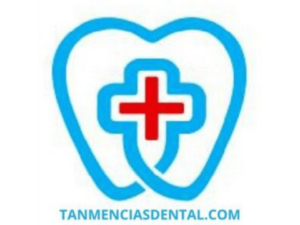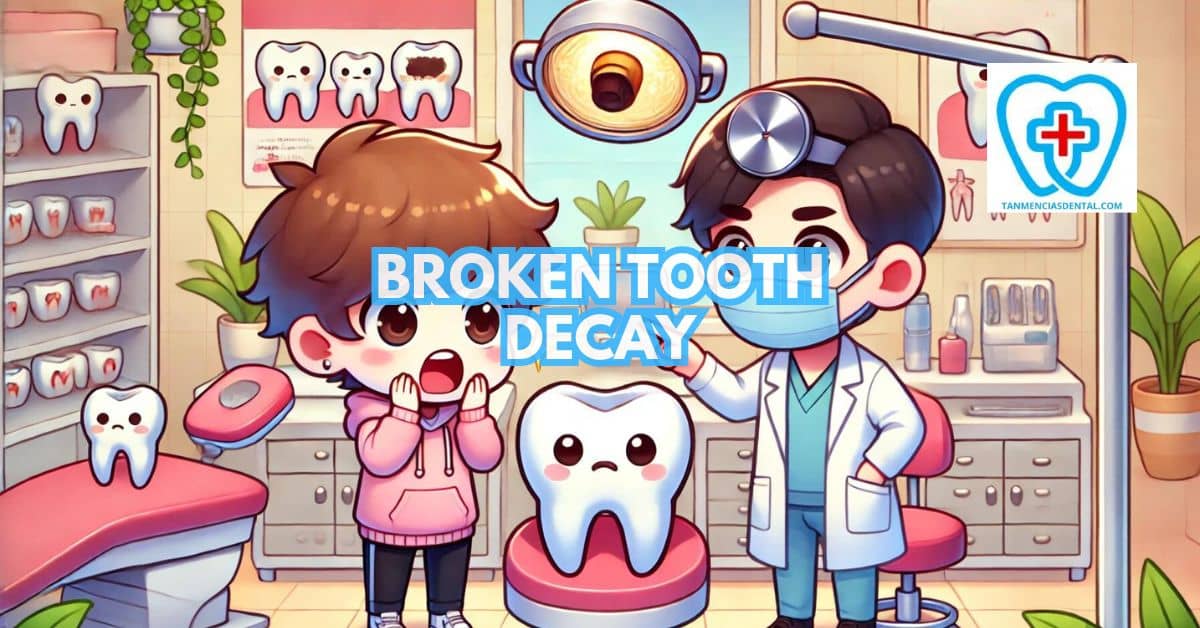Broken tooth decay happens when a fractured or chipped tooth becomes a breeding ground for harmful bacteria.
The break exposes the inner layers of the tooth, making it more vulnerable to infections and plaque buildup.
As bacteria gather in the cracks, it begins to eat away at the tooth, causing decay to spread.
Left untreated, this can lead to infections, pain, and even tooth loss.
Knowing how this process works is essential for catching the issue early and seeking timely treatment.
1. Spotting the Early Signs of Broken Tooth Decay
In the early stages of broken tooth decay, pain or sensitivity to hot, cold, or sweet foods is a common indicator.
You may notice the broken tooth feels rough when your tongue moves over it, or that small food particles get stuck in the cracks more easily.
Discoloration, such as dark spots or lines on the damaged tooth, can also be an early sign of decay.
Bad breath or a persistent bad taste in your mouth could be caused by the bacteria thriving in the damaged area.
Catching these early signs can prevent more severe issues from developing.
🦷 Why Are Dental Implants So Expensive? Understanding the Costs
2. How to Conduct a Visual Check for Tooth Damage
To check for broken tooth decay, stand in front of a mirror in a well-lit room and open your mouth wide.
Look for obvious cracks, chips, or areas where the tooth appears uneven or jagged.
Pay special attention to any discolored spots or darker areas near the damaged tooth.
If a piece of the tooth is missing or there is a noticeable gap, this can make it easier for decay to set in.
Performing these visual checks regularly can help you spot problems before they get worse.
🦷 What to Do When You Have a Broken Tooth With Exposed Nerve
3. The Importance of Regular Dental Checkups for Early Detection
Seeing your dentist regularly is one of the most effective ways to identify broken tooth decay before it becomes a bigger issue.
Dentists have the tools and experience to detect even minor fractures or hidden decay, especially in areas you can’t easily see.
During routine visits, your dentist will clean your teeth, remove plaque, and check for early signs of damage or infection.
Early detection means that treatments, such as fillings or crowns, can be applied before the tooth suffers significant harm.
Skipping these checkups increases the risk of decay going unnoticed and spreading.
🦷 Discover Effective Tips on How to Keep Teeth Healthy Without Brushing
4. Using Dental X-rays to Uncover Hidden Decay
Some decay isn’t visible during a normal dental exam, especially if it’s beneath the surface or between teeth.
Dental X-rays are essential in spotting decay that may be hiding under fillings, in the cracks of a broken tooth, or deep within the tooth’s structure.
They allow dentists to assess the full extent of the damage and decide on appropriate treatments.
X-rays also help in finding decay early, preventing more invasive procedures later on, such as root canals or tooth extractions.
Getting regular dental X-rays is crucial for uncovering hidden decay that could otherwise go unnoticed.
🦷 Dentist vs. Doctor: Which Professional Should You Consult for Your Health Concerns?
5. Tracking Changes in Your Oral Health: What to Look For
Monitoring any changes in your teeth and gums is critical for early identification of decay.
Pay attention to increasing tooth sensitivity, especially to temperature or sweets, which may suggest deeper decay.
Swelling or redness in the gums near the broken tooth could indicate an infection or abscess forming.
Notice if your broken tooth feels weaker or if chewing becomes uncomfortable in that area, as this could point to worsening decay.
By tracking these changes, you can catch issues before they escalate into more serious dental problems.
🦷 Is It Too Late To Start Brushing My Teeth? Why It’s Never Too Late for a Brighter Smile!
6. Identifying Risk Factors for Broken Tooth Decay
Certain lifestyle habits or conditions can increase your risk of broken tooth decay.
People who frequently grind their teeth or bite into hard objects, such as ice or pens, are more likely to develop cracks, which can lead to decay.
High sugar intake, poor dental hygiene, and pre-existing dental work like old fillings or crowns also contribute to a higher risk.
Health conditions like dry mouth or acid reflux can worsen decay by reducing your mouth’s ability to wash away bacteria.
Understanding these risk factors helps you take precautions to protect your teeth from further damage.
🦷 Dentist vs. Orthodontist: Understanding the Key Differences in Dental Care
7. The Role of Saliva in Protecting Your Teeth
Saliva plays a crucial role in keeping your mouth healthy by neutralizing acids and washing away bacteria.
It helps to clean the surface of your teeth, preventing food particles from sticking to broken areas where decay can start.
People with dry mouth, whether due to medication, aging, or dehydration, are more prone to developing broken tooth decay.
Stimulating saliva production by drinking water or chewing sugar-free gum can help protect your teeth.
Ensuring you have enough saliva flow is a simple but effective way to prevent decay from worsening.
🦷 Interesting Things About Dry Brushing Your Teeth You Need to Know!
8. Recognizing Related Oral Health Issues That Can Lead to Decay
Other oral health problems, such as gum disease or worn enamel, can increase the chances of broken tooth decay.
Gum disease creates pockets between the teeth and gums where bacteria can thrive, contributing to faster decay, especially around damaged teeth.
Misaligned teeth can also trap food particles and plaque, which worsen decay in broken areas.
If you have existing conditions like receding gums or cavities, they make it easier for decay to spread.
Managing these related issues is key to reducing the overall risk of broken tooth decay.
🦷 Can You Brush Your Teeth 3 Times A Day? What Dentists Wish You Knew
9. What to Do If You Suspect Broken Tooth Decay: Immediate Steps to Take
If you think your broken tooth is starting to decay, contact your dentist as soon as possible to schedule an examination.
While waiting for your appointment, avoid eating hard or sugary foods that could worsen the damage.
Rinse your mouth with warm salt water to reduce bacteria buildup and ease any swelling or discomfort.
Use a soft-bristled toothbrush and fluoride toothpaste to clean the area gently without aggravating the damage.
Acting quickly can help prevent further decay and reduce the need for extensive treatment.
🦷 Can Tooth Decay Kill You? Dangers of Neglected Dental Health
10. How to Prevent Future Instances of Broken Tooth Decay
Preventing future cases of broken tooth decay involves taking care of both your teeth and your overall oral habits.
Avoid using your teeth to open packages or bite down on hard objects, as these actions can cause cracks.
Stick to a consistent oral hygiene routine that includes brushing twice a day, flossing, and using an antibacterial mouthwash.
Eating a balanced diet rich in calcium and reducing your sugar intake will help strengthen your teeth and minimize decay risk.
Regular dental checkups will also ensure that any minor damage is caught early and treated promptly.
🦷 Can You Get Gingivitis From Kissing? The Truth Behind Oral Hygiene and Romance
👨⚕️ Conclusion
Being aware of broken tooth decay and acting early are the best ways to avoid serious dental issues.
Regular checkups, proper oral hygiene, and mindful habits help you prevent decay from worsening.
If you spot any signs of damage or feel discomfort, taking quick action will save you from costly or painful treatments later.
Your proactive efforts not only keep your teeth healthy but also contribute to long-term oral wellness.
Staying vigilant and informed is the key to avoiding future dental complications.
😊 Self-Promotion
At Tan-Mencias Dental Clinic, located in Parang, Marikina City, we are dedicated to providing top-notch dental care in a friendly and comfortable environment.
Whether you need a routine checkup or have specific concerns, our skilled team is here to help you achieve your best smile.
For inquiries or to arrange an appointment, please contact us at 9171451074, send a message via our Facebook page, or utilize the contact form on our website.
Our team is always available to address any questions or concerns you may have.
Visit us today and experience personalized, professional dental care you can trust!

